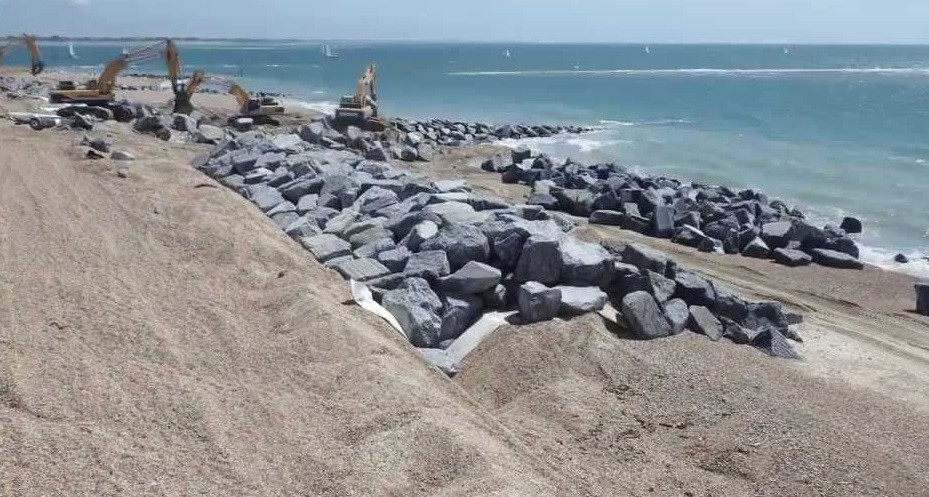One of the most important things you can do to protect your land is to construct a rock revetment. Rock Revetment is a way of absorbing energy from incoming waves and water. Here are simple ways in which a rock revetment can save your land.
Ways in Which a Rock Revetment can Save Your Land
Rock Revetment is a way of absorbing energy from incoming waves and water. Fairing prevents and investigates damage caused by coastal erosion. Fairings are sloping structures consisting of multiple layers of large rock and geotextile placed on banks and shorelines to prevent loss of shoreline.
Rock Revetment is the only form of erosion control we will install; this is the only long term solution. Compared to dikes, rock faces offer a great, if not better, alternative for protecting beaches, houses and other structures along the coast.
One of the most important things you can do to protect your land is to construct a rock revetment. In this article, you will be given a brief history of the Rock Revetment process and what it does for your land.
You'll find out how long it takes and the different types of materials that have been used in construction over time. Finally, you'll get some tips for putting one up yourself!
Deep Sea Rock Protection
One way a rock revetment can save your land is by preventing erosion. If the soil is constantly being eroded, then the rock revetment will help to hold the soil in place and prevent further damage.
The revetment can also help to insulate the earth from extreme weather changes, such as hurricanes or flash flooding. Additionally, a rock revetment can help to protect natural resources, such as groundwater or minerals.
Benefits of a rock revetment
A rock revetment is a type of earth embankment that can help protect land from erosion and landslides.
When properly installed by the professional rock revetment installation company, a rock revetment can also provide a natural barrier against water intrusion, helping to maintain soil moisture and improve water quality. Here are some of the benefits of using a rock revetment:
1. It can help protect land from erosion and landslides.
2. It can provide a natural barrier against water intrusion, helping to maintain soil moisture and improve water quality.
3. It can create a beautiful landscape feature.
Revetment retaining walls
The construction of retaining walls with lining serves to secure and strengthen embankments or rocks and to protect coastal areas or riverbanks from being washed away by rivers and waves.
This type of construction usually does not have the main function of resisting the lateral pressure exerted by the soil, but serves as a protection against the effects of abrasion or erosion, which can affect the stability of embankments and slopes, which of course has the potential to cause damage.
To start a project on your beach, you need approval from DEQ. You can find more information on this page. Obtaining permits takes time and you will need coastal engineering for your project to be approved.
Rock Revetment Construction
Rock Revetment construction should not be attempted without the experience of shoreline consultants and shipbuilders. The shoreline structure must be designed with careful consideration of rock size, wall slope, and ridge height and ridge width.
The size of the scale used relies on wave factors such as height, direction, slope, cross-sectional design, and availability of protective rock.
The height of the ridge should be above the wave line during storms to prevent further erosion of the dune.
How to build a rock revetment
A rock revetment is a type of earth embankment that uses natural rocks to help protect land from erosion. The embankment can be built in a variety of shapes and sizes, and can be used to protect both public and private land.
A rock revetment can be used to shield hills or valleys from erosion, and can also be used to help stabilize slopes.
Rock Revetment Construction Costs
The cost of cladding mainly depends on the size and materials used. Some structures can offer indefinite life, while others, smaller riprap slopes, require regular maintenance. Like anything in construction, you get what you pay for.



0 Comments